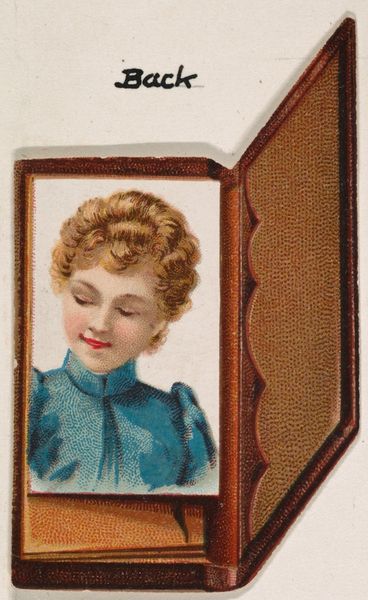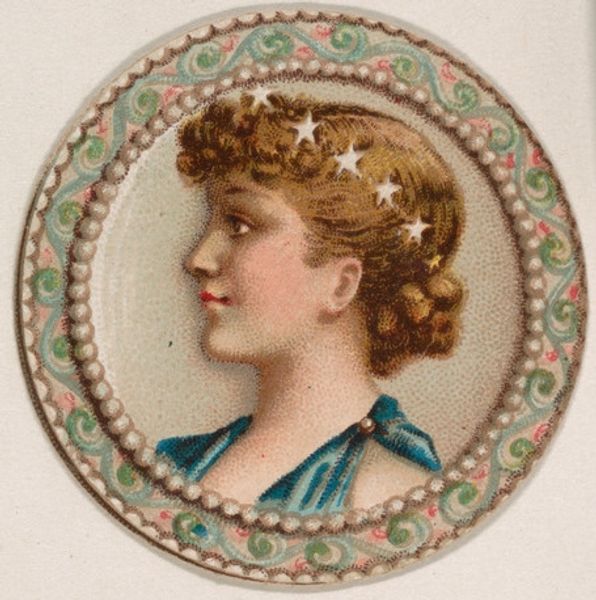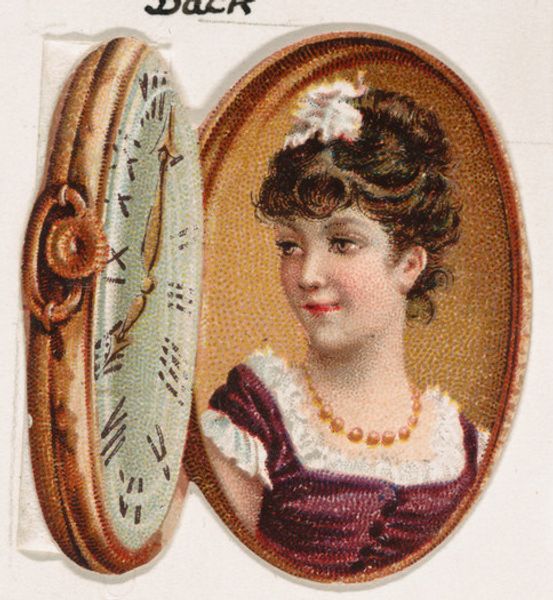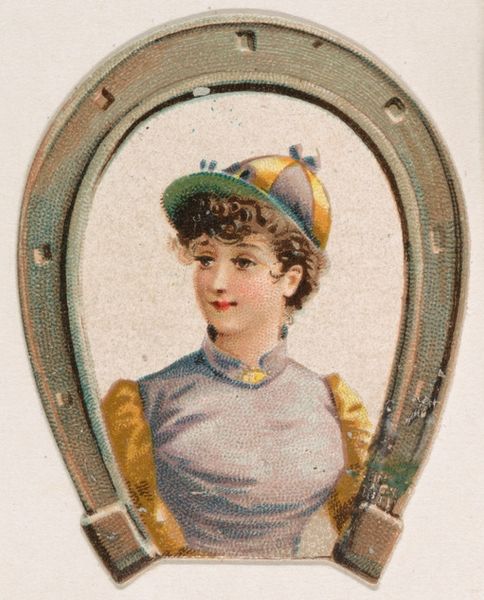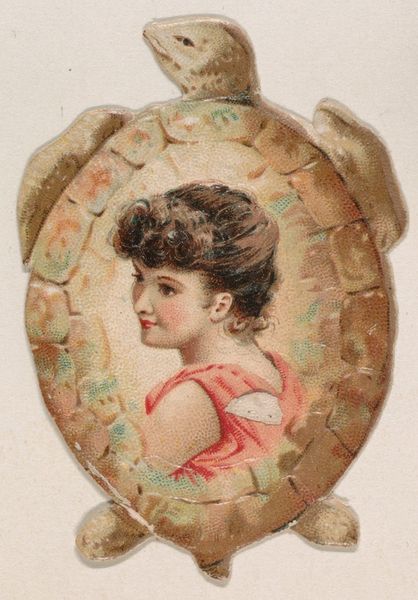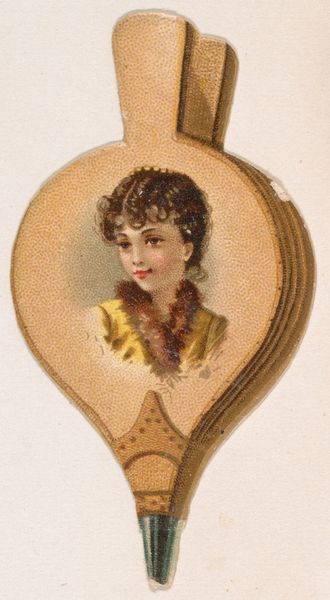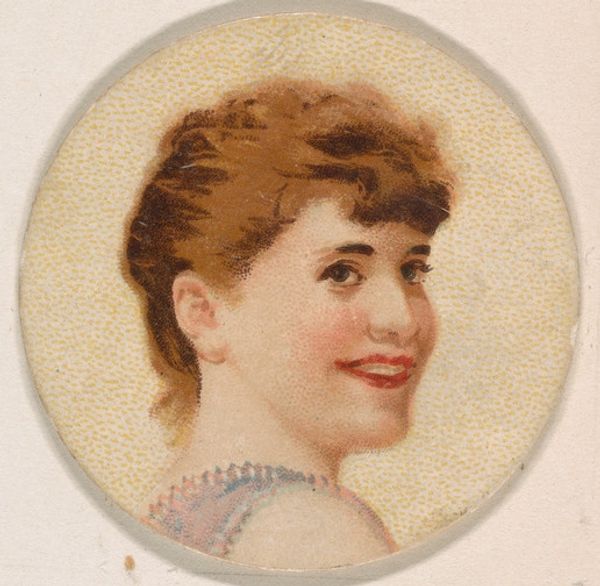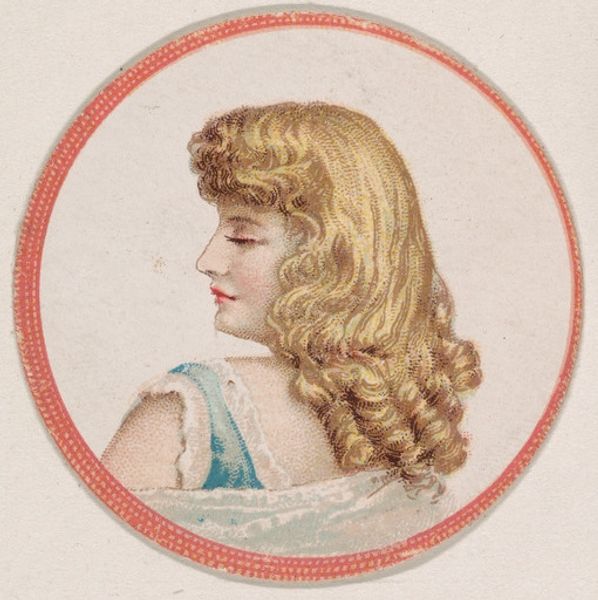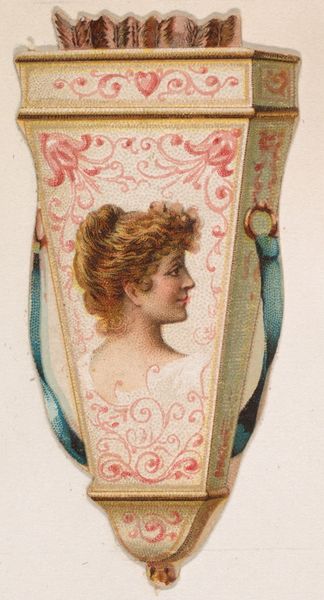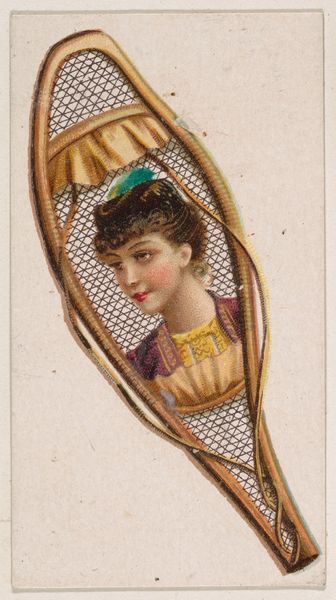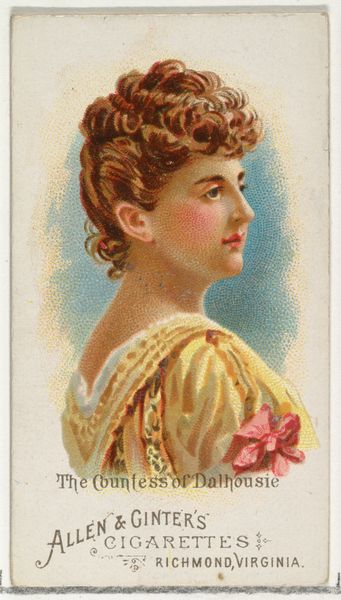
Painting easel, from the Novelties series (N228, Type 3) issued by Kinney Bros. 1889
0:00
0:00
Dimensions: Sheet: 2 1/16 × 1 9/16 in. (5.2 × 3.9 cm)
Copyright: Public Domain
Editor: So, this is “Painting Easel” from 1889 by Kinney Brothers Tobacco Company. It's a small print, part of their Novelties series. It’s so delicate, and I’m immediately drawn to the portrait. How do you interpret this work, considering its original context as a trade card? Curator: It's interesting to consider how the portrait, usually associated with high art, is being repurposed for commercial ends. The easel itself becomes a frame for the commodification of femininity, doesn't it? How does situating this within the late 19th century, a period grappling with burgeoning consumer culture and shifting gender roles, influence your reading of the piece? Editor: I hadn’t thought of it that way. It’s almost as if the woman is being presented as another product for consumption. Is the presentation on an easel further emphasizing her role as an object, even a work of art? Curator: Exactly! The easel doesn’t just present a portrait, but actively participates in constructing an ideal of femininity that is then circulated and consumed. And consider the company behind it—a tobacco company. How does the association with this specific commodity add layers to our understanding of the image? Editor: It feels like there's a tension between the idealized portrait and its use to promote a product that may have had harmful impacts. It makes you think about the ethics of advertising, even back then, and how images are used to persuade. Curator: Precisely. It pushes us to examine the complex power dynamics at play, highlighting how art, commerce, and gender are intricately linked. The 'novelty' aspect of these cards also points to a cultural fascination with collecting and displaying images, which, even then, had a kind of social currency. Does this new framing influence your opinion about the work? Editor: Absolutely. Seeing it as part of a larger cultural conversation, not just a pretty picture, makes it much more engaging. It has me thinking about how these images would have circulated, and what they represented to the people who collected them. Curator: And hopefully inspires you to look for the hidden layers of meaning within all artworks, always considering their context and the social forces they reflect.
Comments
No comments
Be the first to comment and join the conversation on the ultimate creative platform.
